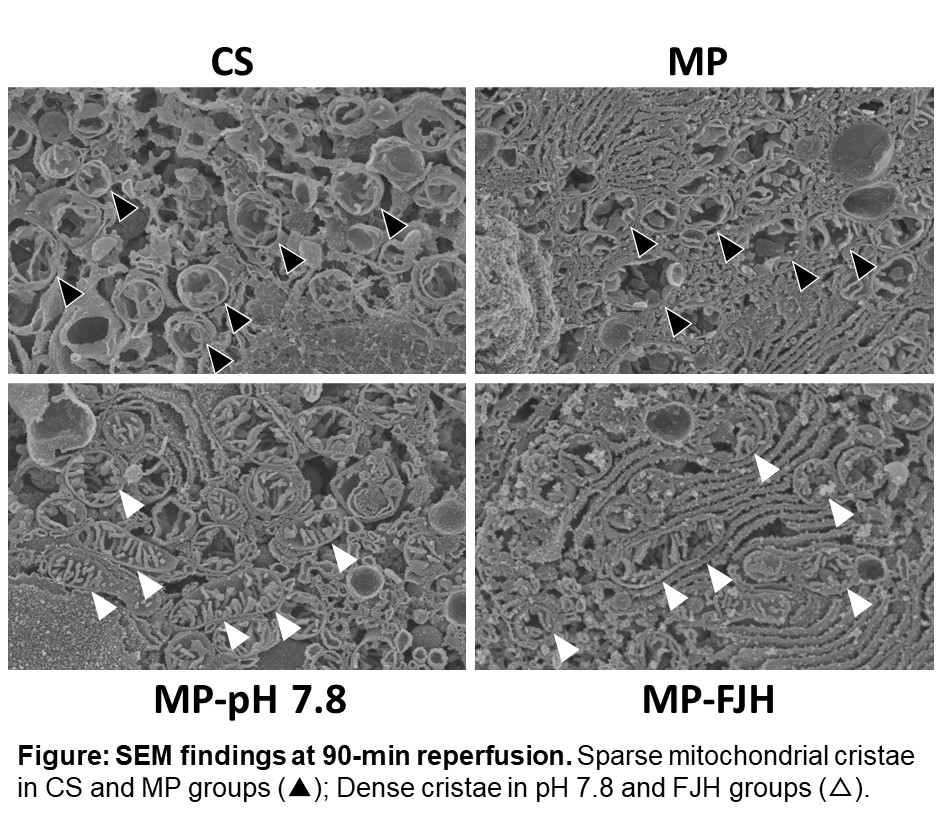Exploration of the Optimal pH in Hypothermic Machine Perfusion for Rat Liver Grafts Retrieved from Circulatory Death
1Department of Gastroenterological Surgery 1, Hokkaido University Graduate School, Sapporo, Japan, 2Department of Cell Physiology, The Jikei University School of Medicine, Tokyo, Japan, 3Division of Organ Transplantation, Hokkaido University Hospital, Sapporo, Japan
Meeting: 2022 American Transplant Congress
Abstract number: 940
Keywords: Ischemia, Liver transplantation, Rat
Topic: Basic Science » Basic Science » 15 - Machine Perfusion and Organ Rehabililtation - Basic
Session Information
Session Name: Machine Perfusion and Organ Rehabilitation - Basic
Session Type: Poster Abstract
Date: Sunday, June 5, 2022
Session Time: 7:00pm-8:00pm
 Presentation Time: 7:00pm-8:00pm
Presentation Time: 7:00pm-8:00pm
Location: Hynes Halls C & D
*Purpose: Although some investigators have reported favorable results of hypothermic machine perfusion (HMP) in liver transplantation, the efficacy to the hepatic graft retrieved from circulatory death (DCD) is controversial. Since the pH of blood increases with a temperature drop due to the decrease of proton concentration [H+], pH of neutrality depends upon the temperature. We hypothesize that the optimal acid-base equilibrium for cells is determined not by [H+] but by the ratio of [H+] and [OH–]. The aims of the present study were to find out the optimal pH in HMP for DCD rat liver grafts and to elucidate the mechanism of graft protection.
*Methods: Rat livers were retrieved after 30-minute of cardiac arrest and subjected to 3-hour cold storage in UW solution (CS group) or HMP with UW-gluconate solution (MP group) of pH 7.4 (original), 7.6, 7.8, and 8.0 (MP-pH 7.6, 7.8, 8.0 groups, respectively) at 7-10 degree. We made a novel perfusion solution (FJH) with the optimal pH for HMP, which has a strong buffering ability to suppress fluctuation of pH during HMP, and compared the efficacy of FJH and the other groups. The livers were applied to the isolated perfused rat liver apparatus (IPRL) which simulating normothermic reperfusion. Graft function, injury, perfusion kinetics, and mitochondrial function and structure were assessed.
*Results: The HMP groups showed graft protection compared to the CS group regardless of pH shown by the lower liver enzymes. Among MP groups, MP-pH 7.8 group showed significant protection compared to CS group evidenced by bile production and less injury in histopathology. The FJH-group showed significantly higher oxygen consumption rate, bile production, and lower portal venous resistance during reperfusion, together with significantly lower perfusate liver enzymes and post-reperfusion tissue apoptosis. Scanning electron microscopic findings revealed well-preserved structure of mitochondrial cristae and higher incidence of intra-mitochondrial abnormal vesicles that suggest mitophagy (Figure).
*Conclusions: The efficacy of HMP is enhanced by adjusting the pH to the optimal range, around pH 7.8, mainly through its ability to preserved and repair the structure and function of mitochondria, leading to reduce post-reperfusion injury in DCD rat liver.
To cite this abstract in AMA style:
Sakamoto S, Fukai M, Shibata K, Bochimoto H, Zin NMohd, Kawamura N, Ishikawa T, Fujiyoshi M, Shimamura T, Taketomi A. Exploration of the Optimal pH in Hypothermic Machine Perfusion for Rat Liver Grafts Retrieved from Circulatory Death [abstract]. Am J Transplant. 2022; 22 (suppl 3). https://atcmeetingabstracts.com/abstract/exploration-of-the-optimal-ph-in-hypothermic-machine-perfusion-for-rat-liver-grafts-retrieved-from-circulatory-death/. Accessed January 7, 2026.« Back to 2022 American Transplant Congress

